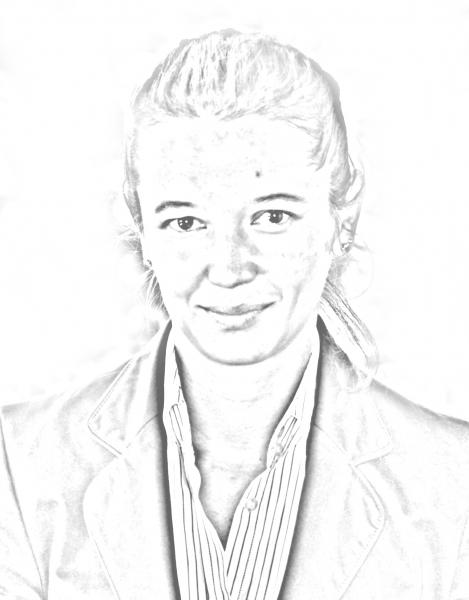Selling Money on eBay: A Field Study of Surplus Division

Our main findings are as follows. First, nearly one half of all subjects offer between 40 and 50 percent of the total trading surplus to the seller. This finding confirms the focal preference for an egalitarian division in the subject population, in line with the theories of Boehm et al. (1993) and Henrich et al. (2006). Second, more than one out of four of our subjects are “egoistic”, i.e. their behaviour is consistent with the maximization of their own monetary payoffs. They offer no more than 10 percent of surplus to the seller. All in all, the average share offered by our eBay users is 29 percent, which is comparable to the estimates obtained in lab experiments of the ultimatum game (see the meta-study by Ooseterbeek et al. (2004)).
Our experiment is designed as follows. We post for sale Amazon gift cards at Ebay.de, where the face value of the cards ranges from 5 to 500 Euros. Amazon gift cards are used for topping up Amazon customer accounts online and are typically received as presents, as well as rewards for participation in Internet surveys or lottery prizes that firms use to attract customers. Often there are gains from trade between a card owner (seller) who prefers cash over credit to his Amazon account, and a buyer of this card, who is an active Amazon customer and values the card at its nominal value. Such possibilities of gains from trade, in fact, gave rise to a substantial secondary market of gift cards on the German site of eBay (www.ebay.de), with an estimated turnover of seventy thousand Euro per quarter.
There are several trading protocols available at Ebay. We employ the “Buy it now or best offer”, or BINBO format. According to the rules of BINBO, the seller posts an initial ask price and invites any eBay buyers who come across the listing to acquire the object at that price or make their own price offer. The duration of sale is limited and the remaining time is public information. When a buyer makes an offer, the seller has 48 hours (unless the listing expires earlier) to reply with acceptance, rejection, counter-offer or not reply at. When a price offer is accepted, the card is sold.
We have received a rich set of offers, ranging from 1 Euro, the lowest admissible offer on eBay, to amounts exceeding the nominal value of the gift card. Since the latter offers are clearly irrational, we exclude them from the analysis. To make the data comparable across treatments, we normalize the offers by dividing each offer by the nominal value of the gift card. The pooled data display clustering: the relative offers concentrate around 0, 50, 80, and 90 percent of the gift card. Overall, the distribution of offers is right-skewed: every second offer exceeds 80 percent of the nominal value. The average offer in our sample ranges from 71 to 77 percent of the nominal value and does not display monotonicity with respect to the gift card's nominal value. The same is true of median values that range from 75 to 82 percent of the nominal value.
During the preliminary regression analysis, we find that the observed distributions of relative offers do not vary with the amount of money at stake. Thus, players behave similarly be they faced with a gift card of value 5 euros or a gift card of 500 Euros. The finding that stake size does not affect the relative offers permits us to pool the data across different value treatments and to work subsequently only with the single set of data.
Second, we find that the observed behaviour of buyers is insensitive to the public information about the degree of competition or the public history of seller's responses to price offers. This suggest that buyers are not really strategic when they make their offers and act as if it was one-short bilateral interaction with the seller. Third, we analyse the data on buyers' ZIP-codes to group observations by geographic regions, namely, East and West Germany. We notice that, while both groups of offers display clustering at exactly 50% of the card's value, the "naive equal split" is more prevalent among the subjects coming from East rather than West Germany. Furthermore, West German subjects are more likely to make competitive offers, that is, to comply with the theoretical prediction of a model with multiple buyers.
Our main analysis is about decomposing a given offered price into two parts: the outside option of the seller, as perceived by the buyer and the amount of money that the buyer gives to the seller on top of that outside option. Obviously, for a given single offer, there is a continuum of possible decompositions. However, when considered on aggregate, the distribution of offered prices can be decomposed into two distributions, i.e. of outside options and of shares, at a very high precision.
Decomposing the observed distribution of relative offers in two underlying unobserved distributions is equivalent to solving an integral equation with two unknown functions. Since the problem is infinite-dimensional, the technical challenge is to reduce the dimensionality to obtain a computationally feasible program. To do so, we restrict the possible distributions to be from a family of finite polynomials. Starting with the uniform distribution as a candidate solution for both functions we subsequently raise the polynomial degree until the optimal solution within the respective class passes a pre-specified goodness-of-fit test; we use the bootstrapped Kolmogorov-Smirnov test statistic.
All in all, the main conclusions from our analysis are two. First, similarly to a large body of evidence from the lab, the observed data can hardly be interpreted by a model where all players are selfish and there is common knowledge of this fact. Second, uncertainty about the number of players generates large variations in behaviour as compared to the setting where the player set is common knowledge.
Specifically, in contrast to findings in comparable lab experiments on the ultimatum game with public information on the number of competing proposers, we observe that offers are not driven up to the full nominal value. Therefore, for any buyer-seller pair, there is a non-trivial surplus from trade to be shared. Put differently, in a competitive setting with uncertainty, the buyers ("proposers") have scope to express their preferences.
References
- Boehm, Christopher, et al. "Egalitarian behavior and reverse dominance hierarchy [and comments and reply]." Current Anthropology 34.3 (1993): 227-254.
- Henrich, Joseph, et al. "2006 Costly punishment across human societies. Science 312, 1767–1770.(doi: 10.1126/science. 1127333." University of California. 2008.
- Oosterbeek, Hessel, Randolph Sloof, and Gijs Van De Kuilen. "Cultural differences in ultimatum game experiments: Evidence from a meta-analysis." Experimental Economics 7.2 (2004): 171-188.
About the Authors

Dr. Alia Gizatulina is currently employed as an Assistant Professor in Microeconomics in University of St. Gallen, Switzerland. Previously she worked as a research fellow at the Max Planck Institute for Research on Collective Goods in Bonn, Germany. During her PhD studies in University of Mannheim she worked on different theoretical topics in the field of Mechanism Design, her work also includes several applications to public economics and auction theory.

Dr. Olga Gorelkina is a lecturer at the University of Liverpool Management School. Prior to joining ULMS in 2016 she was employed as a research fellow at the Max Planck Institute for Research on Collective Goods in Bonn and held a visiting professor position at Yale University. Her Doctoral thesis at Toulouse School of Economics tackled topics Mechanism design, her other research interests include public, financial and behavioral economics.
